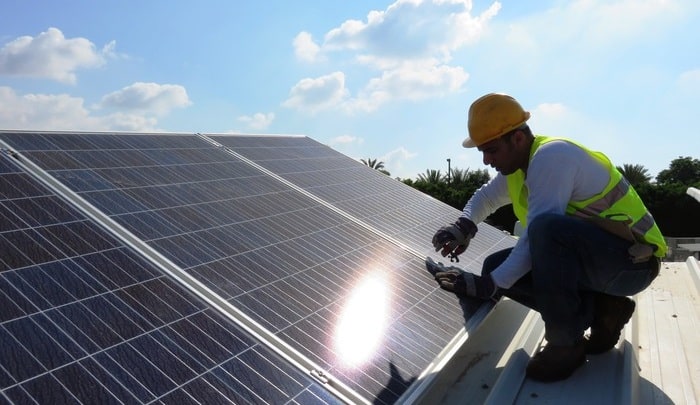The coronavirus (Covid-19) pandemic has had widespread ramifications on the economy, significantly impacting the solar industry in China. Currently, the nation is by far the largest supplier of modules and raw materials for module assembly.
Global demand for solar equipment and government initiatives accelerated its growth as a world leader in solar equipment manufacturing. Up until the 2008 recession, the solar manufacturing policy was driven by exports rather than supporting the domestic market, which was satisfied by default. This enabled China to establish a sizeable overseas market and emerge as an important player in the global supply chain.
Global agenda for low-carbon power generation and technology advancements pushed domestic equipment manufacturers to achieve economies of scale and create a capacity glut, which drove down module prices. The ability to manufacture at scale and undercut local manufacturers abroad allowed manufacturers to strengthen their grip on export markets.
Global demand, supported by development plans promoting solar deployment in high-capacity markets such as Germany, Japan and India and in new markets within the Middle East and Asia, provide module manufacturers opportunities to secure additional orders and sustain or ramp up utilisation rates, which, consequently, places downward pressure on module prices.
The depreciation in costs followed Swanson’s Law, which implies that the price drops by 20% for every doubling of shipped product. As the global economy shifts towards embracing renewables, high manufacturing volumes and better technology adoption will continue to drive down the price of modules. Given its importance in the global supply chain, dynamics in the Chinese market is likely to have a ripple effect on other countries located downstream.
Since the outbreak of Covid-19, in an effort to restrict transmission, the government imposed a temporary moratorium on commercial activity, which resulted in several factories being closed for the short term. Industrial areas of Jiangsu, Guangdong, Anhui and Zhejiang have extended the New Year holiday to mitigate the effects of the virus and local transport has been greatly impacted.
The decline in necessary primary materials production and stringent quarantine requirements have disrupted industrial output, with factory utilisation rates plummeting significantly. That and other secondary factors will make it difficult for manufacturers to fabricate new modules and any existing demand will, as a consequence of supply shortage, drive up the price in the short term.
It is anticipated that the existing inventory supplies will play a major role in restricting the sharp increase in post-Covid-19 price during the first quarter (Q1) 2020, which is estimated to increase to $0.25/W from $0.24/W in quarter 4 (Q4) 2019. Despite the gradual recovery in other industries, critical for the fabrication of modules, the lingering effect of production drops will see post-Covid-19 module prices at approximately $0.27/W in Q2 2020 when compared to the pre-Covid-19 forecast of modules prices, which were estimated to be approximately $0.228/W in Q2 2020.
In Q3 and Q4, most facilities are expected to resume operations and the reduction in the supply-demand gap will facilitate a decline in post-Covid-19 module prices to $0.26/W and $0.25/W respectively.
The outbreak in China would raise solar module prices in the near term, with manufacturers experiencing material supply shortages. Production rates have been affected by the restrictions imposed by the government to deal with Covid-19 transmission and labour shortages due to quarantine requirements.
Determining the full impact of the virus is impossible due to high uncertainty and any recovery is dependent, on how quickly the implemented mitigation measures will help the solar industry return to full production. With the Chinese Government proactively working to combat the spread of the virus, markets are expected to bounce back and the solar industry is likely to gradually recover over the second half of 2020.





































